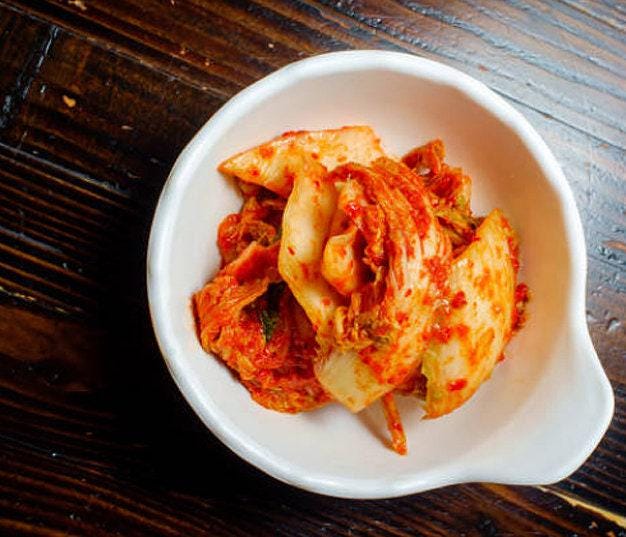This softer, loose-leaf form of Chinese Cabbage has dense, narrow leaves with a deeper green outer colour, and lighter green to almost white interior leaves with wide, flat white celery-like ribs. It has a cylindrical, leafy head rather like a large romaine lettuce. A dual purpose variety, the tender leaves are often used raw as a romaine lettuce would be, in salads or coleslaw. It can also be steamed whole, finely cut into slices for a salad, cut coarsely for a stir-fry, the possibilities are endless!
Chinese cabbage dates back to the 15th century in China, when a pharmacologist of the Ming Dynasty considered it nutritionally beneficial. Later it became the main ingredient in kimchi, the national dish of Korea; Japanese soldiers also discovered Chinese cabbage and took it home with them after the war.
It is thought that Chinese cabbage is a cross between bok choy and turnips. Americans became familiar with this vegetable in the late 19th century. Michihili was developed to perform especially well in North America, and has a stronger flavor than other cabbages. Sow it in the spring for young salad leaves or in late summer for a fall crop of full-sized cabbages.
Grows best at 60° - 65°F. Solid, crisp cylindrical heads of Michihili average 16-18" tall x 4" in diameter with dark-green leaves and a well blanched interior.
~ planting ~
When to sow outside RECOMMENDED: 1 to 2 weeks before average last frost, or 10 to 12 weeks before average first fall frost.
When to start inside: 6 to 8 weeks before the last spring frost. Sow your seeds ¼ inches deep and 2 inches apart. Place them in a spot where they'll get plenty of sunlight, or set them under grow lamps with temperatures between 60 and 70 °F.
Cabbage will do well with at least two inches of good compost or aged manure turned into the planting bed.
Start your seeds indoors about 4-5 weeks before you want to transplant them to your garden.
Cabbage, and all of your plants in the Brassica family need to be hardened off before planting in the garden. Set your seedlings outside in a sheltered area for an increasing number of hours each day for about a week. Choose an area at first where they won’t be exposed to harsh wind or direct sunlight. Leave them out for 1-2 hours at a time to start, then gradually work your way up to 7 or 8 hours by the end of the week. This gradual hardening off will allow your baby plants to become acclimated to the cold, and you can plant out earlier in the spring because of it.
Thin the seedlings so that there is only 1 seedling per cell or pot that you transplant. You can wait until the seeds have germinated, then pick the strongest seedling in each tray.
Once they’re hardened, set your plants so that 1 to 2 inches (2.5 to 5.1 cm) of the main stem is buried in the soil. Seedlings should have at least 3 or 4 adult leaves before you transplant them.
Arrange your cabbage in rows with plenty of sun exposure. Cabbage needs at least 6 hours of sunshine a day. The more sun your cabbage gets, the larger and faster the heads will grow. Set the seedlings in rows 12 to 24 inches (30 to 61 cm) apart. For fall or winter varieties, leave a minimum of 24 inches (61 cm) between each seedling, if not a little more.
~ growing ~
Cabbages need moist soil, at least an inch a week. Unless you've had frequent rain, water the soil around the cabbages at least once a week. Keep about 2” of mulch around your cabbages to keep the moisture in the soil.
If the sun gets too hot, Chinese cabbage tends to "bolt" or go to seed; in long periods of heat, some kind of shade may be helpful.
~ harvesting ~
Fall crops should be harvested before a hard frost (though it may be hardy down to 28°F). Spring crops should be harvested before seed stalks form. Harvest heads after they firm up and are solid but not too hard. Cut just above the soil surface (young, tender, edible leaves may sprout from stump!) As you are thinning seedlings, use the tender young leaves in salads, or you can harvest whole plants when they are young, 3" - 4" tall.
~ additional info ~
- all seeds are heirloom, open-pollinated, organic & non-gmo (unless noted otherwise).
- detailed instructions are included with every seed package.
- inquire for discounts available on bulk quantities.



















